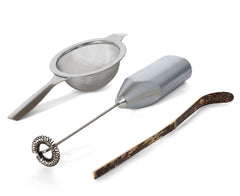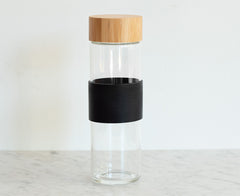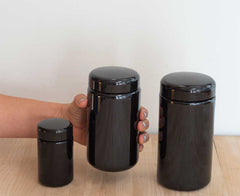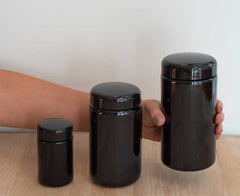When Daphne was a toddler, she loved to scream,
DAPHNE WABI-SABI GOWER!!
and laugh herself into a frenzy on the floor.
I think I must have been re-reading Leonard Koren’s magnificent book, Wabi-Sabi for Artists, Designers, Poets, and Philosophers, for the umpteenth time during her toddlerhood. Now six, Daphne is doing her best to continue to introduce the term to anyone who’ll listen.
The term wabi-sabi feels like it’s headed toward that elite group of Japanese words that somehow make it into common English usage (think anime, manga, samurai, haiku, origami and of course all of the food and ingredient names, among countless others). A search on Amazon for the term yields more than 500 results, in book titles, music titles, jewelry, throw pillows, iphone covers, tee shirts, table runners, baby caps, wall art, and little toy train accessories. Wabi-sabi is everywhere–especially in commerce, it seems–these days.
To most Japanese, the term wabi-sabi is a confusing one; it tends to touch rather deeply on issues of identity and what it means to be a Japanese. It quickly devolves into something known as nihonjin-ron: the seemingly endless debate in the popular Japanese press about what, exactly, it means to be a Japanese. Ask a random Japanese person to try to define wabi-sabi, and you will almost always hear something like, “It’s really difficult to explain.”
Like Koren, I’ve never met a Japanese who can confidently articulate what it means. But, like Supreme Court Justice Potter Stewart (who was talking about pornography), many will say something like, “I can’t define it, but I know it when I see it.”
“The zen of things” might be as good a definition as any, since the first Japanese to develop the concept were zen priests and tea masters. And since zen is itself difficult to express/articulate, wabi-sabi is too, and most Japanese have given up trying.
Along the way, as Koren so masterfully illustrates in his new complement volume, Wabi-Sabi: Further Thoughts, wabi-sabi has been reduced, simplified, and packaged by Japan’s many iemoto (heads of ancient family lineages that teach traditional Japanese arts), into a narrow—and definitive—set of rules. This represents the morphing—one might even say death—of wabi-sabi from its origins of rustic simplicity into its opposite—something packaged, decided, and even polished and sacrosanct.
Iemoto today, every bit the living embodiment of the tea ceremony and the entire concept of wabi-sabi that they have been for centuries, with their rather vast empires of tea schools and tea commerce, are in point of fact rather brilliant, if not altogether transparent, entrepreneurs. An iemoto’ssignature on a tea scoop, whisk, or other utensil (or on the box it comes packaged in) can add thousands of dollars to its value. Very few practitioners would dare to make tea in a way not sanctioned by them.

We recently had the delightful opportunity to host Leonard for a lunch and some matcha at Breakaway HQ in San Anselmo. His “appealingly irritable sensibility,” as the New York Times called it in a memorable article, was in full evidence, just as it is in his stark, thought-provoking writing.
We talked quite a bit about matcha, of course; Leonard has an extensive background both as a scholar of tea and a practitioner, and has a fluency and unique comprehension of matcha I’ve never encountered. When I mentioned that matcha can be an excellent tool for many who hope to enhance their own cognition and maybe even productivity, he was skeptical.
“Though I love tea, I’m not sure getting those cognitive lifts are the best way to work. If I feel good about something, I’m pretty sure I’m not on the right track. In my work, I need the pessimism, the self-criticism, the negativity, the despair. Of course it feels better to feel optimistic, hopeful, and to think you’re on the right track, but it feels bad if maybe you go a few days without tea and caffeine, and realize maybe it wasn’t such a good idea to use it as thought-fuel. That rather narrow optimistic track is nice, but I need a wider vision. Caffeine helps me get deep along a narrow path, but staying away from anything cognitively enhancing helps me experience my full range of attitudes and emotions.”
Leonard has had a remarkably diverse history of interests, passions, and experiences. He’s well-known a “design philosopher,” with deep backgrounds in art and architecture. I asked him how, at parties, he answers the awful question that everyone asks, “What do you do?”
“You say things that will engage other people to get you what’s available,” he answered. ” I usually tell people something different each time. Trained as an artist and architect, self-taught, magazine publisher, author, book designer, product designer, theorist, Depending on what your needs are, I will give you a corresponding answer.”
“I figure that, at least by the time you’re 70 or 80, you figure out where where you fit in in the general scheme of things. At 68, I’m just beginning to realize how I fit into the scheme of things. I denied it most of the time. We tend to categorize people and professions and jobs. Infinite bifurcations, like branches of a tree. Using the metaphor of architecture with design, we mix things like commerce, neurology, globalism, biology, and ethnography. Wabi-sabi, if you look at it in its broadest interpretation, is found in all these things.”
Wabi-sabi images force us to think about our own mortality, says Koren. It evokes a tender sadness, and maybe loneliness, but those feelings are comforted by the knowledge that ALL things in existence share the same fate. Nothing will remain in the end, if we think in evolutionary terms of billions of years.
Diffused light through washi (Japanese paper), the color and textural changes of metal as it rusts and decomposes are classic wabi-sabi images. This state of going toward our eventual fate—from something to nothing—and a conscious appreciation of that very state can give rise to incredible feelings of beauty and stillness, yet evoke a feeling of being totally alive and free. It’s a nice space to be in. Matcha is an obvious doorway for me. Wabi-sabi is about enjoying the delicate balance between the pleasure we get from things, and the pleasure we get from the freedom of things.
For more on wabi-sabi and other highly original and idiosyncratic examinations of things that fascinate him, check out Koren’s publications at www.leonardkoren.com




